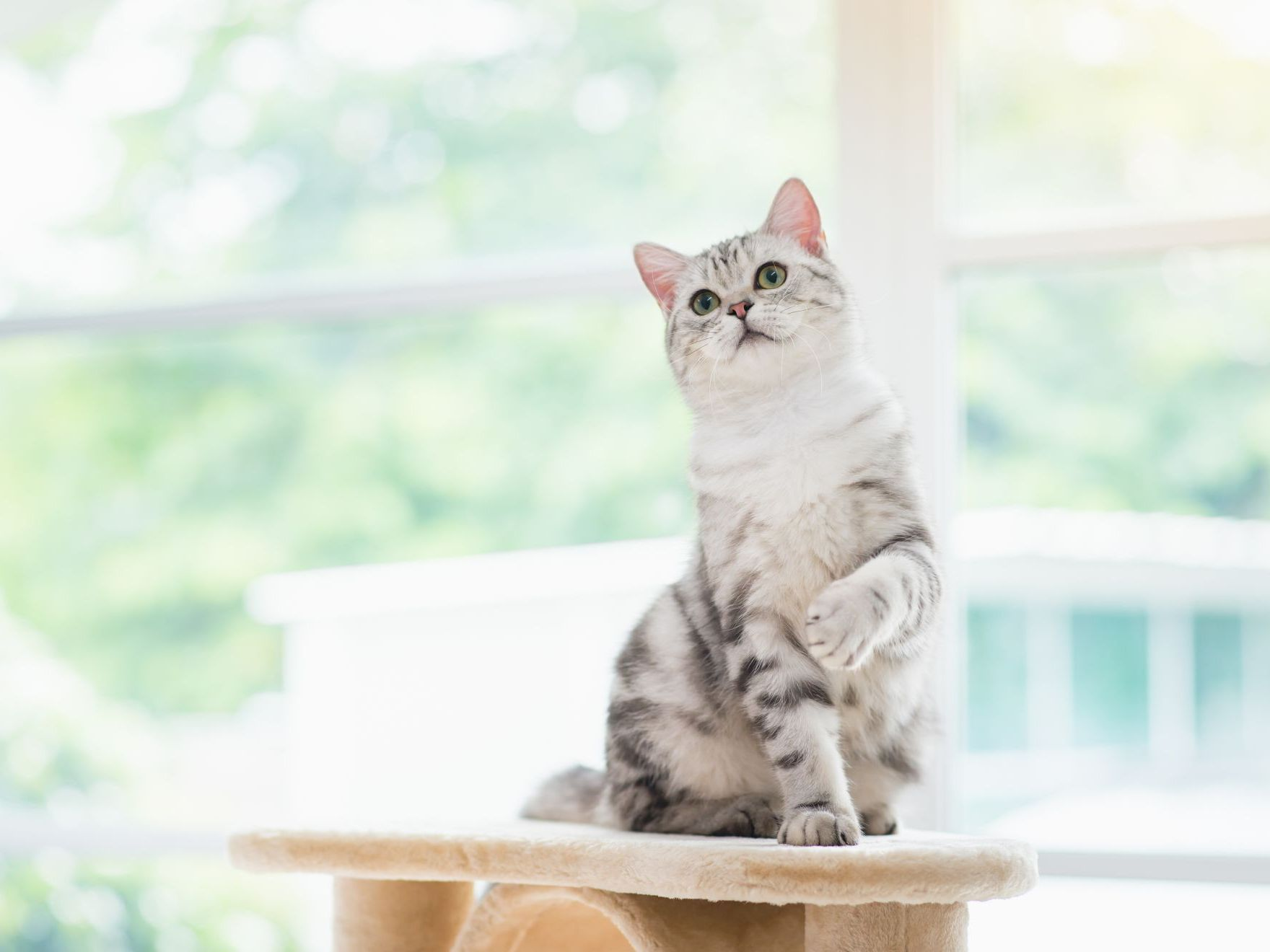Moving house with a cat? What you need to know
Taking your cat into account at all stages of the moving day preparations, and reading up on the most important tips for moving with a cat, will help make the experience less stressful for everyone involved, human and feline.
Article

Relocating with your cat to a new home
The best way to move with a cat is by limiting the upheaval they face as much as possible: your aim is to avoid the scenario of a cat stressed from moving. Some disturbance to your cat’s routine is inevitable, but these pointers will help ease the process. The preparations for moving house with a kitten should begin well before the actual moving date.
Top tips for moving with a cat
Cats produce a pheromone when they feel secure, which they spread around their home by rubbing their faces on furniture and other objects.
Plug-in diffusers or sprays can replicate these pheromones, so if your cat starts to get stressed as the moving day preparations begin, you can use them to help keep your kitten calm in advance of moving day as well as after as part of settling your kitten into their new home.
It may seem counterintuitive, but leaving your cat’s travelling case out in advance will give them the chance to explore it in their own time, rather than always associating it with being confined immediately before a journey. You could even put toys in there to encourage them to explore or spray the kitten pheromone spray.
Try to keep things as normal as possible until the last minute before the move. Make sure piles of boxes or other moving paraphernalia do not stop your cat from accessing their food or water bowl, their bedding or their litter tray.
Make a safe zone for your cat in a spare room or other quiet area. Gradually transfer some favourite toys and a comfortable bed to their kitten space, so they can retreat there if the upheaval gets too much in the rest of the house.
Make sure you have any equipment or health certificates you need (if you’re travelling abroad or taking a flight with your cat) ready in advance. If you’re calm, that will help your pet to relax too. Don’t hesitate to ask your vet for tips on how to make the journey itself go smoothly.
Be sure to register your pet with a new vet in your new area if they won’t be able to keep seeing your existing practice. Change the registered address on your cat’s microchip as well, so if they do go missing, you’ll be swiftly reunited. An ID tag (on a quick-release collar for safety) is also a good idea. Your cat’s ID tag will help you find them if they ever get lost, whether you’re moving or not.
If your cat is of a very nervous disposition, the simplest and least stressful option could be boarding them in a cattery for the duration of the move, giving you a chance to get the new place organised and cat-friendly before they move in. Specially formulated food that can help calm your cat may be something to consider too: your vet will be able to advise you.

Settling your cat into a new home
Once you’ve arrived, how to settle your kitten into their new home will be a key consideration. Helping your kitten to settle will require time and patience. Getting a cat used to a new home is a process that cannot be rushed. Start with a safe room that is closed off from the bustle of moving in, similar to the room you prepared for your kitten when they first arrived in the family. If you’re wondering how to help your kitten settle in, here are a few pointers.
1. First things first
Unpack your cat’s things first, before you even let them out of their carrier. Finding their familiar food bowls, not to mention your kitten’s litter box, bedding and toys, will be reassuring for them. Now is not the time to splash out on a new bed (or a different type of cat food). Release your kitten from their carrier in the room with their comforting items, shut the door and give them some space and peace to explore.
2. Follow their nose
Continuing to use pheromone sprays or diffusers can help your kitten keep calm in their new environment and contribute to the gradual process of getting a cat used to a new home. You can also help them spread their all-important kitten scent on their new home by rubbing a soft cloth under their chin and then onto furniture and fabrics in the new place.
3. Be prepared for accidents
Even the most reliably house-trained feline can have an ‘accident’ in an unfamiliar environment. Stay calm and keep showing your cat where their litter tray now lives. And make sure it’s spotless: having access to a perfectly clean kitten toilet will encourage them to use it.
4. Take it slowly
Getting a kitten used to a new home is a gradual process. Increase your cat’s access to their new surroundings little by little. Once they seem calm and content in their safe room, you can start letting them explore more of the apartment or house. But keep all windows and doors firmly shut for now!
5. Get back into a routine
The more your cat gets used to familiar activities such as mealtimes, play sessions and grooming in their new territory, the sooner they will start to feel at home. Routines are a comforting reassurance that all is well, even if the surroundings have changed, so try and get back on your pet’s schedule as soon as you can.
6. Watch out for stress
It’s normal for your cat to be stressed from moving. If, however, they don’t settle in as time goes by or if your cat is aggressive or won’t eat after moving, don’t hesitate to see your vet. This also applies if you see other signs of stress like excessive grooming, scratching or meowing, restlessness, loss of appetite or urinating indoors.
Do you have an outdoor cat?
‘When can I let my kitten outside?’ will be one of the first questions you ask yourself once you’ve moved. The answer is: it depends, both on your cat and their new environment. Moving an older cat to a new home is different from relocating a kitten. Moving house with an outdoor cat will throw up different challenges to relocating an indoor one. Taking it step-by-step, and slowly, will help ease the transition, in any case.
How long to keep your cat in after moving house?
Whatever their existing habits, once you’ve moved your cat to their new house, it’s recommended that you keep your cat inside for at least two to three weeks. It may sound strange but you could sprinkle some of your cat’s used litter around the edge of your garden, to let other cats know there’s a new feline in town … and to make the environment feel more familiar to your cat when they eventually go out.
When you feel ready to let your kitten out—perhaps the early weeks have passed and your cat is adjusting to their new home—approach with caution, adopting some of the strategies you used when you let your pet out for the first time.
Kibble calling. Let your cat first go out shortly before they normally eat. That way if they need encouragement to come back inside, a shake of the bowl (or the familiar sound of the tin or packet being opened) should do the trick.
Safety first. Make sure your garden is free of hazards such as sharp tools, poisonous plants or spaces your cat could get stuck in, and that it is securely enclosed.
Escape route. Leave the door open so they can come back inside as soon as they want to. Cats also appreciate hide-outs like plant pots that they can sit in to observe their surroundings.
Little by little. Start with short periods outside, gradually building up to longer forays. Don’t let your cat out at night at first. Go outside with your cat at first and don’t force it if they aren’t interested, just try again another day.
Will a cat go back to their old home?
An intrepid feline returning to their old stomping ground may sound like an urban legend, but this is a real possibility. Despite all your efforts, your cat might still try to head back to their former residence (and if you’ve moved close by they might just make it). Why do cats go back to their old house? It could be because they have not yet formed a strong enough bond with their new territory.
Give the new occupants and your former neighbours a heads up and make sure they have your contact details to alert you if your cat keeps going back to their old house. And go right back to the start, patiently re-establishing your cat’s new routines: feeding times, grooming and play. The more comfortable they feel in their new space, the less they will be drawn to the old one.
While moving is stressful for everyone, feline members of the family included, with the right preparations and a patient and consistent approach once you’re in your new place, your cat should settle in smoothly.
Related Articles
Like & share this page

